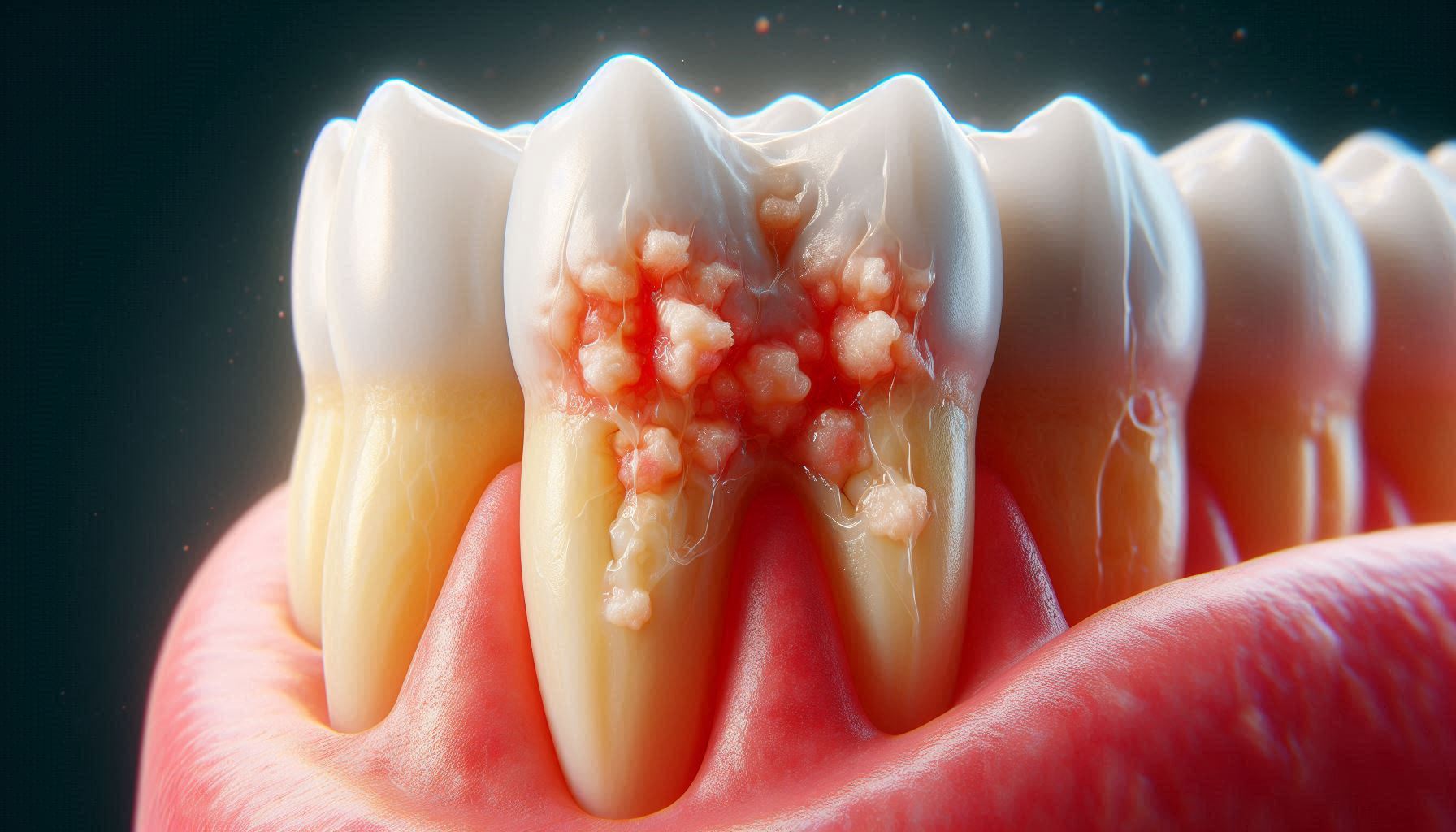Dental health is a crucial component of overall well-being, influencing not only our ability to eat and speak but also our self-esteem and quality of life. Neglecting oral hygiene can lead to a range of dental issues that, if untreated, may result in serious health complications. This article explores common dental problems, including cavities, gum disease, tooth sensitivity, bad breath, and oral cancer, providing insights into their causes, symptoms, prevention strategies, and treatment options.
Cavities develop from plaque buildup and poor dental care, while gum disease arises from untreated plaque and can lead to tooth loss. Tooth sensitivity can be triggered by worn enamel or gum recession, causing discomfort with temperature changes. Bad breath often indicates underlying dental concerns, and oral cancer requires early detection for effective management. By understanding these conditions, individuals can take proactive steps to maintain their oral health. Regular dental check-ups, good hygiene practices, and a healthy lifestyle are essential for preserving your smile and overall health. Addressing dental issues promptly can help ensure a lifetime of healthy teeth and gums, ultimately enhancing your quality of life.
1. Cavities
What Are Cavities?
Cavities, medically known as dental caries, are one of the most prevalent dental issues worldwide. They occur when the hard surface of the teeth (enamel) is damaged, resulting in the formation of holes or decayed areas. Cavities are primarily caused by plaque—a sticky film of bacteria that forms on the teeth.
The Formation of Cavities
Cavities develop through a complex process involving several stages:
- Plaque Buildup: Plaque is formed when sugars from food and beverages interact with the bacteria in the mouth. If not removed through regular brushing and flossing, plaque hardens into tartar.
- Acid Production: The bacteria in plaque produce acids as they digest sugars. These acids can erode tooth enamel over time.
- Enamel Demineralization: When the acid levels in the mouth are high, they begin to demineralize the enamel, weakening it and leading to cavities.
- Cavity Formation: If the demineralization process continues, a cavity can form, eventually reaching deeper layers of the tooth.
Causes of Cavities
Several factors contribute to the formation of cavities:
- Poor Oral Hygiene: Inadequate brushing and flossing allow plaque to accumulate, leading to cavities.
- Diet: Frequent consumption of sugary and acidic foods and beverages significantly increases the risk of cavities.
- Dry Mouth: Saliva helps neutralize acids and wash away food particles. Conditions that reduce saliva flow (like certain medications or health conditions) can increase the risk of cavities.
- Dental History: Individuals with a history of cavities are more likely to develop new ones.
Symptoms of Cavities
Cavities often develop without noticeable symptoms in the early stages. However, as they progress, you may experience:
- Tooth Sensitivity: Increased sensitivity to hot, cold, or sweet foods and beverages.
- Pain: Discomfort or pain when biting down or chewing.
- Visible Holes or Pits: Dark spots or holes on the surface of the tooth.
- Toothache: Persistent pain in the affected tooth.
Prevention of Cavities
Preventing cavities involves adopting good oral hygiene practices and making mindful dietary choices:
- Regular Brushing and Flossing: Brush your teeth at least twice a day with fluoride toothpaste and floss daily to remove plaque and food particles from between teeth.
- Limit Sugary Foods: Reduce consumption of sweets, sodas, and acidic foods. If you consume them, rinse your mouth with water afterward.
- Stay Hydrated: Drink plenty of water to help maintain saliva production and wash away food particles.
- Regular Dental Check-Ups: Visit your dentist for professional cleanings and examinations at least twice a year.
Treatment of Cavities
If cavities do develop, treatment options vary based on the severity:
- Fluoride Treatments: Early-stage cavities may be treated with fluoride to help remineralize the enamel.
- Fillings: For more advanced cavities, the decayed part of the tooth is removed, and the space is filled with materials such as composite resin, amalgam, or gold.
- Crowns: If a tooth is severely damaged, a crown may be placed over the tooth to restore its shape and function.
- Root Canals: In cases where decay reaches the tooth’s pulp, a root canal may be necessary to remove infected tissue and seal the tooth.
2. Gum Disease
What Is Gum Disease?
Gum disease, also known as periodontal disease, is an inflammatory condition affecting the tissues surrounding the teeth. It is a major cause of tooth loss among adults and can also affect overall health.
Stages of Gum Disease
Gum disease progresses through several stages:
- Gingivitis: The earliest stage of gum disease, characterized by inflammation of the gums. It is usually caused by plaque buildup but is reversible with good oral hygiene.
- Periodontitis: If gingivitis is left untreated, it can progress to periodontitis. This stage involves the destruction of the supporting structures of the teeth, including bone, leading to potential tooth loss.
- Advanced Periodontitis: In this severe stage, the supporting tissues and bone are significantly damaged, often resulting in the loss of teeth.
Causes of Gum Disease
Several factors contribute to the development of gum disease:
- Plaque Accumulation: Poor oral hygiene leads to plaque buildup, which can irritate the gums.
- Smoking: Tobacco use is a significant risk factor for gum disease.
- Hormonal Changes: Changes in hormones (such as during pregnancy, menstruation, or menopause) can make gums more sensitive and susceptible to disease.
- Genetics: A family history of gum disease can increase susceptibility.
- Certain Medical Conditions: Conditions like diabetes, autoimmune diseases, and heart disease can contribute to the risk of gum disease.
Symptoms of Gum Disease
The symptoms of gum disease can vary depending on the stage:
- Gingivitis Symptoms: Swollen, red gums that may bleed during brushing or flossing. There may be bad breath but usually no pain.
- Periodontitis Symptoms: Increased gum sensitivity, deeper pockets between teeth and gums, loose teeth, and persistent bad breath.
- Advanced Periodontitis Symptoms: Severe pain, tooth mobility, and significant gum recession.
Prevention of Gum Disease
Preventing gum disease involves maintaining good oral hygiene and adopting healthy lifestyle habits:
- Good Oral Hygiene: Brush twice a day with fluoride toothpaste and floss daily to remove plaque and food particles.
- Regular Dental Visits: Professional cleanings and check-ups can help prevent and treat gum disease.
- Quit Smoking: Stopping tobacco use can significantly improve gum health.
- Healthy Diet: A diet rich in vitamins and minerals supports gum health. Foods high in antioxidants, such as fruits and vegetables, are particularly beneficial.
Treatment of Gum Disease
Treatment options for gum disease depend on the severity:
- Professional Cleanings: Scaling and root planing can remove tartar and plaque from below the gum line.
- Antibiotics: Antibiotic treatments may be prescribed to help control bacterial infection.
- Surgery: In severe cases, surgical procedures may be necessary to restore gum health, such as flap surgery or bone grafts.
3. Tooth Sensitivity
What Is Tooth Sensitivity?
Tooth sensitivity, also known as dentin hypersensitivity, is a common dental issue characterized by sharp pain or discomfort in response to hot, cold, sweet, or acidic stimuli. It can affect one tooth or multiple teeth and can significantly impact quality of life.
Causes of Tooth Sensitivity
Tooth sensitivity can arise from various factors:
- Worn Enamel: Over-brushing or using hard-bristled toothbrushes can wear down tooth enamel, exposing the underlying dentin.
- Gum Recession: Receding gums can expose the roots of teeth, which are not protected by enamel and are more sensitive.
- Dental Procedures: Certain dental treatments, such as whitening or fillings, can temporarily increase sensitivity.
- Cracked Teeth: Fractures or cracks in teeth can allow stimuli to reach the nerve, causing pain.
- Acidic Foods: Consuming highly acidic foods and drinks can erode enamel, leading to sensitivity.
Symptoms of Tooth Sensitivity
Symptoms may vary but typically include:
- Sharp Pain: Sudden, sharp pain in response to hot, cold, sweet, or acidic substances.
- Discomfort: Ongoing discomfort during dental cleanings or when brushing.
Prevention of Tooth Sensitivity
Tooth sensitivity can often be prevented or managed with the following strategies:
- Gentle Brushing: Use a soft-bristled toothbrush and brush gently to avoid enamel wear.
- Desensitizing Toothpaste: These toothpaste varieties contain compounds that help block sensation to the nerve and can reduce sensitivity.
- Limit Acidic Foods: Reduce intake of citrus fruits, soda, and vinegar-based foods.
- Regular Dental Check-Ups: Professional assessments can identify potential issues early.
Treatment of Tooth Sensitivity
If you experience significant sensitivity, treatment options may include:
- Fluoride Treatments: Dentists may apply fluoride to strengthen enamel and reduce sensitivity.
- Dental Sealants: Sealants can be applied to sensitive areas to protect them.
- Surgical Options: In severe cases, surgical procedures may be considered to repair gum recession or cover exposed roots.
4. Bad Breath (Halitosis)
What Is Bad Breath?
Bad breath, clinically referred to as halitosis, is a common condition that can affect individuals of all ages. It can be caused by various factors, ranging from poor oral hygiene to underlying health issues.
Causes of Bad Breath
The causes of bad breath are diverse and can include:
- Bacteria: Poor oral hygiene allows bacteria to thrive in the mouth, producing foul-smelling compounds.
- Food Choices: Certain foods, like garlic and onions, can contribute to temporary bad breath.
- Dry Mouth: Saliva helps cleanse the mouth; a lack of saliva can lead to bad breath.
- Dental Issues: Cavities, gum disease, and oral infections can produce foul odors.
- Medical Conditions: Some systemic conditions, such as diabetes, liver disease, and sinus infections, can cause halitosis.
Symptoms of Bad Breath
The primary symptom of halitosis is persistent bad breath. Other potential indicators may include:
- A dry mouth or sticky sensation.
- A bitter or metallic taste in the mouth.
Prevention of Bad Breath
Preventing bad breath involves maintaining good oral hygiene and adopting healthy habits:
- Maintain Oral Hygiene: Regular brushing, flossing, and using mouthwash are crucial.
- Stay Hydrated: Drink plenty of water to prevent dry mouth.
- Chew Sugar-Free Gum: Chewing gum can stimulate saliva production, helping to neutralize odors.
- Regular Dental Visits: Professional cleanings and examinations can help identify and treat potential causes of bad breath.
Treatment of Bad Breath
If bad breath persists despite good oral hygiene, consider the following treatments:
- Dental Check-Up: See a dentist to rule out dental issues such as cavities or gum disease.
- Antimicrobial Mouthwash: Using an antimicrobial mouthwash can help reduce bacteria in the mouth.
- Treat Underlying Conditions: Address any underlying medical issues that may be contributing to bad breath.
5. Oral Cancer
What Is Oral Cancer?
Oral cancer refers to cancers that develop in the mouth, including the lips, tongue, cheeks, and throat. It can affect any part of the oral cavity and can be life-threatening if not detected early.
Causes of Oral Cancer
Several risk factors contribute to the development of oral cancer:
- Tobacco Use: Smoking or using chewing tobacco is a significant risk factor.
- Alcohol Consumption: Excessive alcohol consumption can increase the risk of oral cancers.
- HPV Infection: Certain strains of the human papillomavirus (HPV) are linked to oral cancers.
- Age and Gender: Oral cancer is more common in older adults and is more prevalent in men than women.
Symptoms of Oral Cancer
Symptoms of oral cancer may vary, but common signs include:
- Non-healing sores or lesions in the mouth.
- Persistent lumps or swelling in the mouth or neck.
- Difficulty swallowing or chewing.
- Changes in voice or speech.
Prevention of Oral Cancer
Preventing oral cancer involves adopting healthy lifestyle choices:
- Avoid Tobacco and Excessive Alcohol: Reducing these risk factors can significantly lower the chances of developing oral cancer.
- Regular Screenings: Regular dental check-ups can help detect oral cancers early.
- Healthy Lifestyle: A balanced diet rich in fruits and vegetables and regular exercise supports overall health and may reduce cancer risk.
Treatment of Oral Cancer
Treatment options for oral cancer depend on the stage and location of the cancer:
- Surgery: Removing cancerous tissue may be necessary.
- Radiation Therapy: Often used in conjunction with surgery, radiation can help kill cancer cells.
- Chemotherapy: Systemic treatment may be used to kill cancer cells or shrink tumors.
6. The Importance of Regular Dental Visits
Why Regular Dental Check-Ups Matter
Regular dental visits are crucial for maintaining good oral health. Dentists can detect early signs of dental issues before they become serious problems. Here’s why these check-ups are important:
- Early Detection: Routine examinations can identify cavities, gum disease, and oral cancer in their early stages when treatment is more effective.
- Professional Cleanings: Even with good oral hygiene, plaque and tartar can accumulate. Professional cleanings remove this buildup, reducing the risk of cavities and gum disease.
- Personalized Advice: Dentists can provide tailored advice based on individual dental health needs and lifestyle factors.
What to Expect During a Dental Visit
During a typical dental visit, the following may occur:
- Medical History Review: Your dentist will review your medical history and any changes since your last visit.
- Oral Examination: The dentist will examine your teeth, gums, and oral tissues for signs of disease or decay.
- X-Rays: If necessary, dental X-rays may be taken to assess the health of the teeth and jaw.
- Professional Cleaning: A dental hygienist will perform a thorough cleaning, removing plaque and tartar.
- Discussion of Findings: Your dentist will discuss any findings and recommend treatment if needed.
Conclusion
Understanding common dental issues is vital for maintaining oral health and overall well-being. Being informed about conditions like cavities, gum disease, tooth sensitivity, bad breath, and oral cancer empowers individuals to take proactive measures to prevent these problems. Regular dental care, combined with good hygiene practices and a healthy lifestyle, is essential for preserving your smile and overall health.
Cavities result from plaque buildup and poor oral hygiene, while gum disease stems from untreated plaque and can lead to tooth loss if not addressed. Tooth sensitivity can occur due to worn enamel or gum recession, causing discomfort with hot, cold, or sweet foods. Bad breath often signals underlying dental issues, while oral cancer requires early detection for effective treatment. If you experience any symptoms related to these conditions, it’s crucial to consult a dental professional for timely intervention. Regular check-ups and cleanings can help catch problems early, ensuring that your dental health remains a priority. Ultimately, your smile is worth the effort—taking care of it is an investment in your overall health and quality of life.
SOURCES
American Dental Association, (2021) – Cavities (tooth decay).
Centers for Disease Control and Preventio, (2022) – Periodontal disease: A public health perspective.
Gupta, A., & Singh, R. (2020) – Tooth sensitivity: Causes, diagnosis, and management. The Egyptian Journal of Otolaryngology, 36(1), 1-7.
Mayo Clinic, (2023) – Bad breath (halitosis).
National Cancer Institute. (2021) – Oral cavity and oropharyngeal cancer.
Smith, D. R., & Wiggins, C. (2019) – The importance of oral health for overall health. American Journal of Public Health, 109(8), 1030-1035.
HISTORY
Current Version
October 19, 2024
Written By:
SUMMIYAH MAHMOOD




